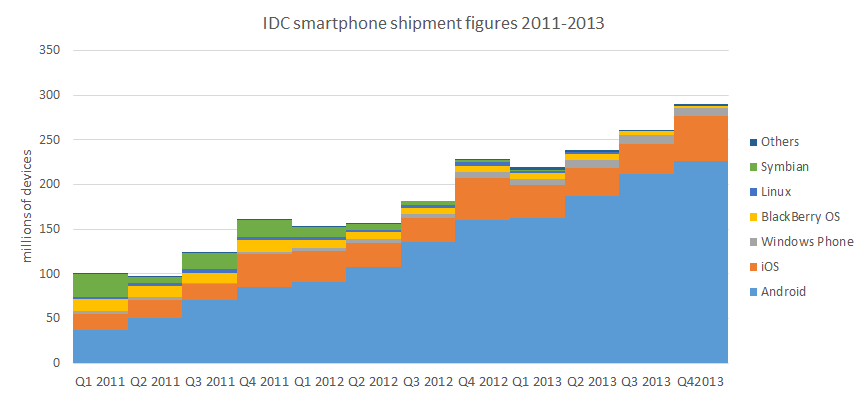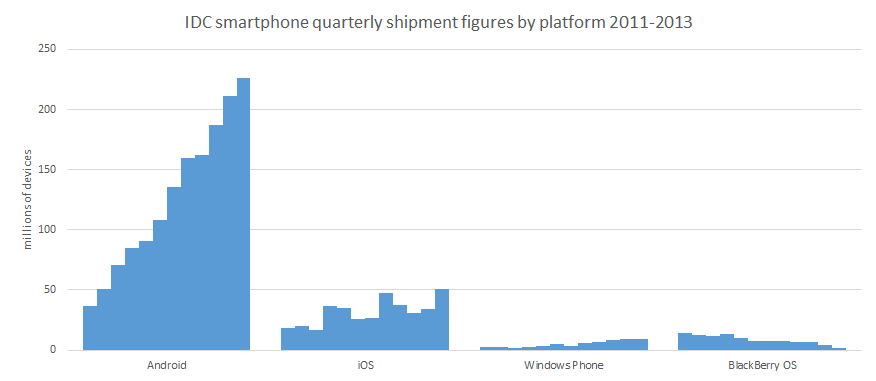
IDC also collated its figure for the year as a whole estimating that 1009.6 million smartphones were shipped in 2013, of which 793.6 million were running Android, 152.4 million were running iOS, 33.4 million were running Windows Phone, and 19.2 million were running BlackBerry OS. Windows Phone increased its market share from 2.4% in 2012 to 3.3% in 2013.
Overall smartphone volumes contrinue to grow strongly, primairly thanks to increased sales of low cost devices. IDC note that in 2013 as a whole 42.6% (430 million devices) of smartphones were sold for less than $200 (£120). The vast majority of such devices were Android, but Windows Phone did enjoy some success in this segment, especially in the second half of the year.

In its press release IDC noted that Windows Phone had the biggest year-on-year increase in device volumes (90.9%), but this is mainly the result of starting from a much smaller base than competing platforms:
Windows Phone posted the largest increase for both the quarter (46.7%) and the year (90.9%), with each nearly doubling the growth of the overall market. Nokia easily led all vendors with 89.3% market share, a testament to its expanding portfolio that addressed entry-level all the way up to large-screen smartphones. What remains to be seen in 2014 is how Microsoft's acquisition of Nokia's smart devices will propel volumes higher.
While 2013 should be seen as a good year for Windows Phone, its volumes are still very small when compared to Android and iOS. What constitutes realistic versus good performance is a matter for debate, but it is clear that Microsoft will need to increase volumes if it is not to be written off as an also ran.

